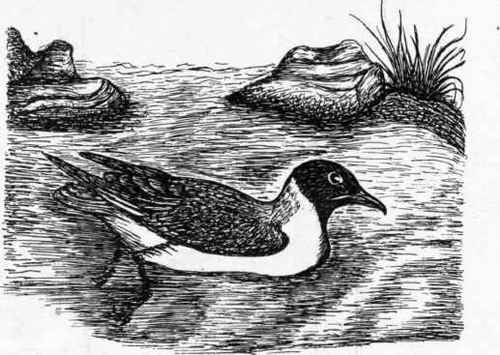Common Gull
Description
This section is from the book "The Balance Of Nature And Modern Conditions Of Cultivation", by George Abbey. Also available from Amazon: The Balance Of Nature And Modern Conditions Of Cultivation.
Common Gull
This and most gulls feed principally upon fish, and in undue numbers damage the fisheries industry to a serious extent; and as their attentions to the land are mainly concentrated on the coasts, the farmers inland derive little benefit from the gull's destruction of pests. On the coasts and in estuaries gulls devour vast quantities of garbage that would otherwise be a nuisance, so that upon the whole gulls may be classed as compensating in usefulness for damage inflicted on fisheries. A fair balance is usually maintained by relaxing the Wild Birds' Protection Acts by County Councils so that their eggs may be taken in districts where they have so increased as to cause serious damage to fishermen.

Fig. 120. - The Black-Headed Gull.
Gulls are readily trapped by tying a piece of offal or fish to the plate or fork of a trap with large jaws, such as the Heron Trap (Fig. 119), with 12-in. jaws for the large gulls, and not less than 7-in. jaws for the small gulls. The traps are set in shallow water and secured on a stump in the water; baited with a fish, such trap will take any fish-eating bird. Fish-hooks are often baited with offal, or pieces of fish, and pegged down, for the purpose of catching gulls.
The Black-Headed Gull (Larus ridibundus, Fig. 120) sometimes breeds on the ponds and lakes of the eastern coasts, but are mostly driven away, as at their breeding-places they are prevented multiplying, the eggs being in much request, having a good flavour and no unpleasant fishy taste, for the birds at this time of year live on land-slugs and worms chiefly. When the eggs are removed, like many other species, they lay again, and even a third time, but the eggs are smaller, some not above a third the proper size. Some eggs of this species are as abnormal in shape and size as eggs of the common fowl frequently are. Unless unduly multiplied the black-headed gull is not injurious to cultivated crops.
Continue to:


